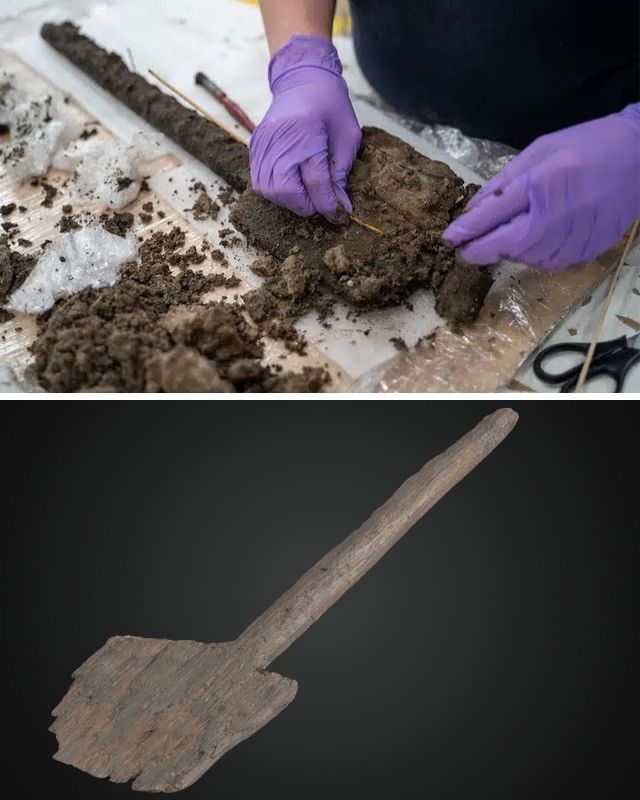Imagine holding a tool crafted 3,500 years ago, its surface still bearing the marks of its creator’s hands. This is the extraordinary story of a wooden spade discovered in Dorset, England—one of the oldest and most complete wooden tools ever found in Britain. Preserved by the waterlogged soils of Poole Harbour, this artifact reveals how Bronze Age humans not only survived but thrived in their challenging environment. What secrets could this humble tool hold about life thousands of years ago?
Unearthing the Past: The Discovery of the Wooden Spade
The discovery of the wooden spade was part of the ongoing Moors at Arne project near Poole Harbour, an initiative aimed at restoring over 150 hectares of wetland habitat to combat climate change. During excavations, archaeologists uncovered the spade buried deep within waterlogged soil, its preservation made possible by the oxygen-poor environment.
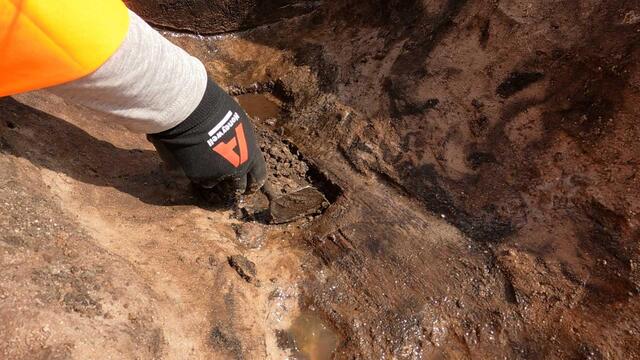
The spade, crafted from a single piece of oak, dates back approximately 3,500–3,400 years to the Middle Bronze Age. Its design and material immediately caught the attention of archaeologists, who recognized its significance as one of the most complete wooden tools ever found in Britain. “The moment the spade started to be uncovered, the team on-site knew it was a very special object,” remarked environmental archaeologist Edward Treasure.
Waterlogged environments like Poole Harbour provide unique conditions for preserving organic materials such as wood, which would otherwise decay over time. This discovery underscores the importance of wetland sites for understanding prehistoric life, offering a rare glimpse into tools and techniques that were integral to Bronze Age societies.
A Marvel of Bronze Age Craftsmanship
The wooden spade is a testament to the craftsmanship and ingenuity of its maker. Hewn from a single solid piece of oak, the spade’s design reflects both functionality and ergonomic considerations. Its handle is offset to the left of the spade’s head, leaving a wider right-hand side—possibly for better leverage during use.
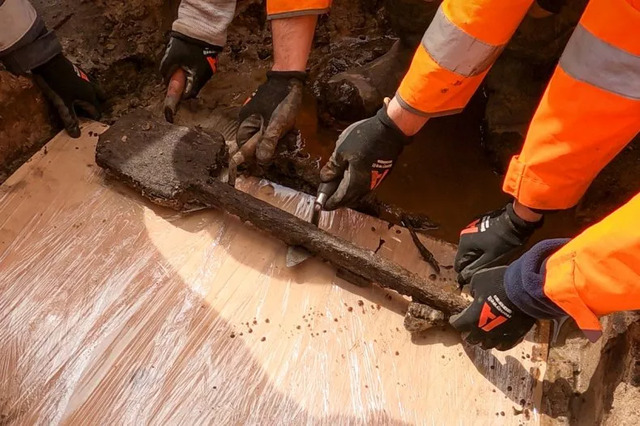
Shaping a tool like this would have required hours of manual labor with rudimentary tools. The grain of the oak reveals the meticulous work involved in carving the spade, demonstrating the skill and knowledge of Bronze Age woodworkers. This intricate craftsmanship not only speaks to the practical needs of the time but also suggests a deep understanding of materials and their properties.
Such tools were likely used for a variety of purposes, including digging, cutting peat for fuel, and perhaps even cultivating crops in the fertile soil of the wetlands. The discovery of this spade provides a rare opportunity to study the technology and techniques of Bronze Age woodworking.
Daily Life in the Middle Bronze Age: Tools, Agriculture, and Innovation
The Middle Bronze Age (c. 1600–1200 BCE) was a period of significant innovation and adaptation. Communities during this time were transitioning from a nomadic lifestyle to more settled forms of agriculture and resource management. Tools like the wooden spade played a critical role in this transformation, enabling people to manipulate their environment for survival and prosperity.
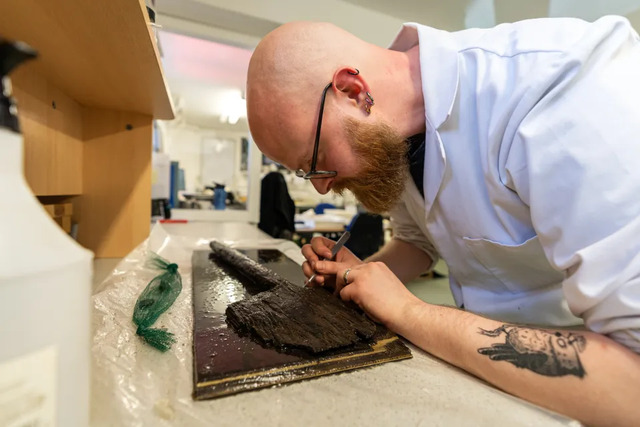
In Dorset, the wetlands around Poole Harbour would have been a valuable resource. Seasonal flooding and drying created opportunities for a range of activities, including grazing livestock, hunting, fishing, and gathering materials like rushes for basket weaving and thatching. Peat, a common fuel source, was likely cut and dried in the area, and tools like the wooden spade would have been essential for such tasks.
Bronze Age communities were highly resourceful, using natural materials to their fullest potential. The discovery of the spade provides direct evidence of how these ancient people interacted with their environment, turning challenging landscapes into hubs of productivity and innovation.
Preservation Through Time: The Science Behind the Spade’s Survival
Wooden artifacts from prehistoric times are incredibly rare due to their organic composition, which makes them prone to decay. However, the unique conditions of Poole Harbour—a waterlogged, oxygen-poor environment—allowed the wooden spade to survive for millennia.
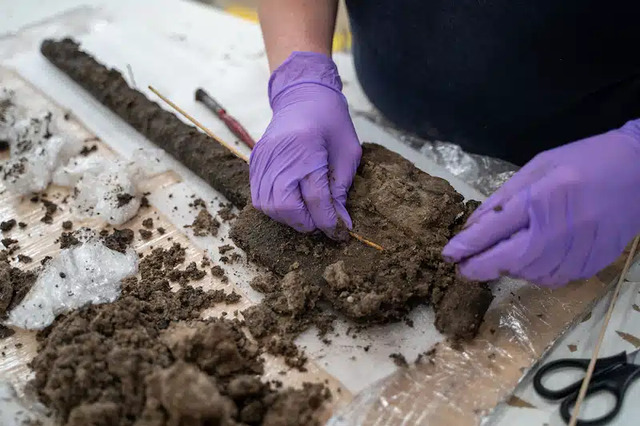
The spade is currently undergoing a meticulous preservation process at Wessex Archaeology laboratories. Specialists are using freeze-drying techniques to stabilize the wood. This involves impregnating the spade with a water-soluble polymer to prevent shrinkage during the water extraction process. Once stabilized, the spade can be stored and studied further without risk of deterioration.
This preservation effort is crucial for ensuring the artifact’s long-term survival. By applying advanced conservation techniques, researchers can unlock more secrets about the spade’s construction and use, providing deeper insights into Bronze Age life.
The Wetlands of Dorset: A Changing Landscape Over Millennia
The discovery of the spade highlights the importance of wetlands in Bronze Age society. These environments, with their seasonal cycles of flooding and drying, offered a wealth of natural resources that ancient communities relied on for survival.
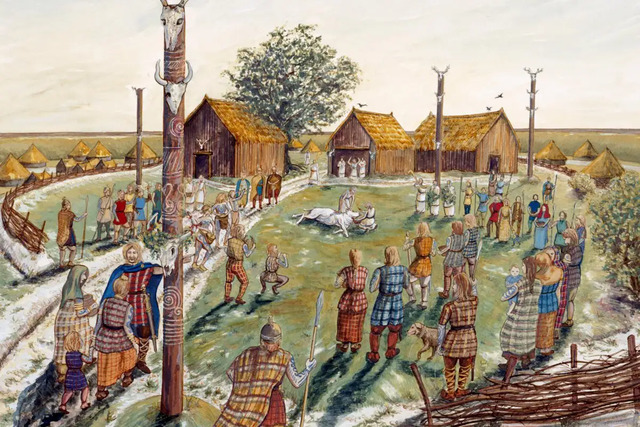
Today, the Moors at Arne project aims to restore these wetlands, not only for ecological purposes but also to combat the effects of climate change. Wetlands like those around Poole Harbour are being lost due to “coastal squeeze,” where rising sea levels and human-made structures reduce intertidal habitats such as mudflats and salt marshes.
By studying the spade and its context, archaeologists can better understand how Bronze Age communities adapted to their environment, offering lessons for modern approaches to sustainability and conservation.
What the Spade Reveals About Bronze Age Society
The wooden spade is more than just a tool—it is a window into the culture and ingenuity of Bronze Age society. Its discovery reveals the intimate relationship between ancient people and their environment, highlighting their ability to adapt and innovate in response to challenges.
The care and effort involved in crafting the spade suggest it was a valued object, possibly used seasonally or passed down through generations. Its design also reflects the practical needs of the time, tailored to the unique conditions of the wetlands.
By studying the spade, archaeologists can glean insights into the broader social and economic structures of Bronze Age communities. The tool serves as a tangible connection to a time when human ingenuity and nature were deeply intertwined.
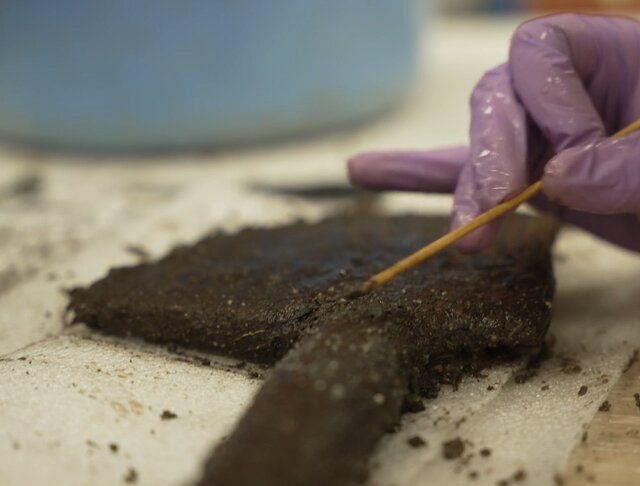
From Discovery to Display: Sharing the Spade’s Story
Once preserved, the wooden spade will likely become a centerpiece of public exhibitions, allowing people to connect with the Bronze Age in a tangible way. Museums and educational programs play a vital role in sharing such discoveries, helping to bridge the gap between ancient history and the modern world.
The spade’s story is one of resilience—not only in how it has survived for millennia but also in how it represents the enduring human spirit of innovation and adaptation. By sharing this story, archaeologists hope to inspire curiosity and appreciation for the rich heritage of our ancestors.
Connecting Past and Present: Lessons From the Bronze Age
The 3,500-year-old wooden spade offers valuable lessons for today’s world. Its discovery underscores the importance of sustainable resource management and adaptation to environmental challenges—principles that remain relevant as we face the impacts of climate change.
The Moors at Arne project serves as a reminder that understanding the past can inform solutions for the future. By studying how Bronze Age communities thrived in challenging landscapes, we can gain insights into resilience and innovation that resonate across millennia.
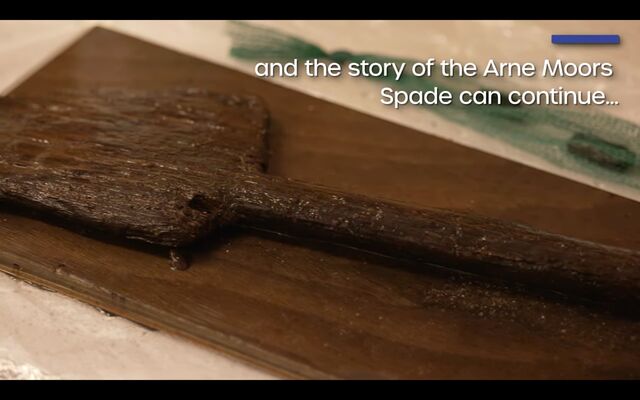
Conclusion
The discovery of the wooden spade in Dorset is a testament to the ingenuity and resourcefulness of Bronze Age communities. Preserved by nature and revealed through science, this artifact bridges the gap between ancient and modern, offering a glimpse into a world that existed 3,500 years ago. As we continue to uncover its secrets, the spade serves as a powerful reminder of humanity’s enduring connection to the environment and the timeless spirit of innovation.
